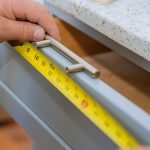If there’s a part of your cabinet setup that goes humbly unnoticed right until the moment they cease to operate, it’s drawer slides. They often exist without thought or recognition, but they are one of the most essential pieces of hardware in your entire kitchen.
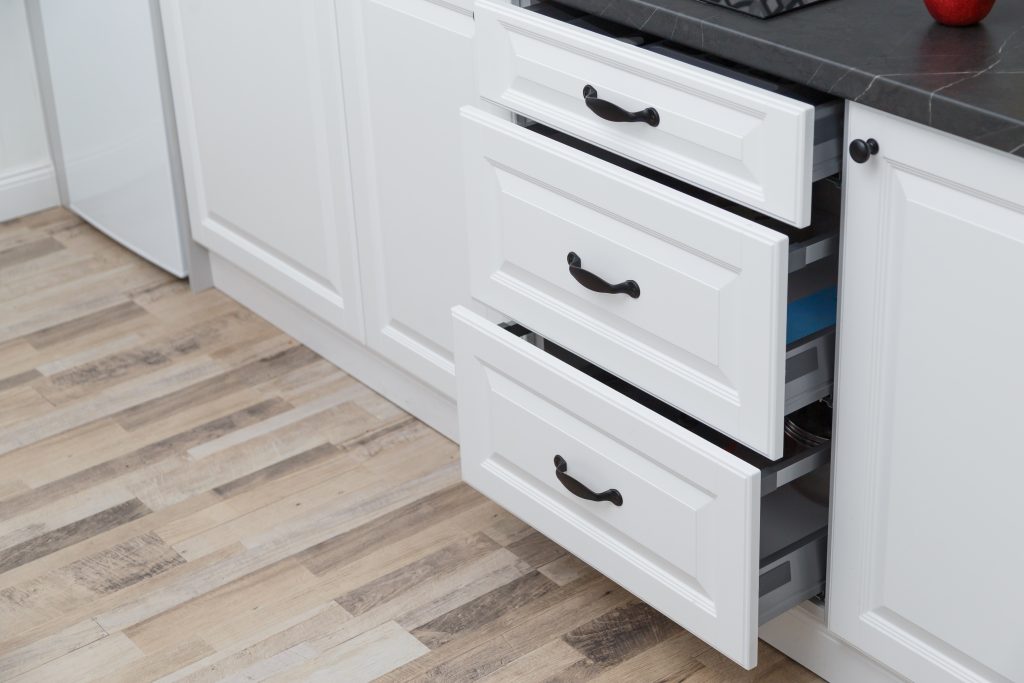
It takes experiencing the agony of a drawer that jams or slams to know just how important these metal railings are. They make your furniture function without a hitch, and bring things to a screeching halt when they aren’t working the way they should. If you’re in need of new drawer slides but are in the dark about what they are or what types are available, you’re in luck. We’ve crafted a guide dedicated to the unsung heroes of cabinetry themselves.
What, exactly, are drawer slides?
To a certain degree, drawer slides are somewhat self-explanatory. They are the tools used to allow horizontal movement of drawers, and can be found in all types of furniture. Dressers, nightstands, workstations and much, much more employ drawer slides to function on a daily basis.
The average set of drawer slides works in tandem, consisting of two narrow housing units that contain small balls (hence the name “ball-bearing drawer slides) that move up and down a set of tracks. Mount drawer slides to either the side or the bottom of the drawer, depending on what the installation calls for.
Regardless of where on the drawer these slides are installed, they provide the same functionality. They are, in the broadest of definitions, the middle man between the drawer and the rest of the piece of furniture. Slides prevent rubbing and unwanted friction between the two parts, allowing for smooth, effortless sliding of drawers whenever they’re called upon to be opened.
How do you install drawer slides?
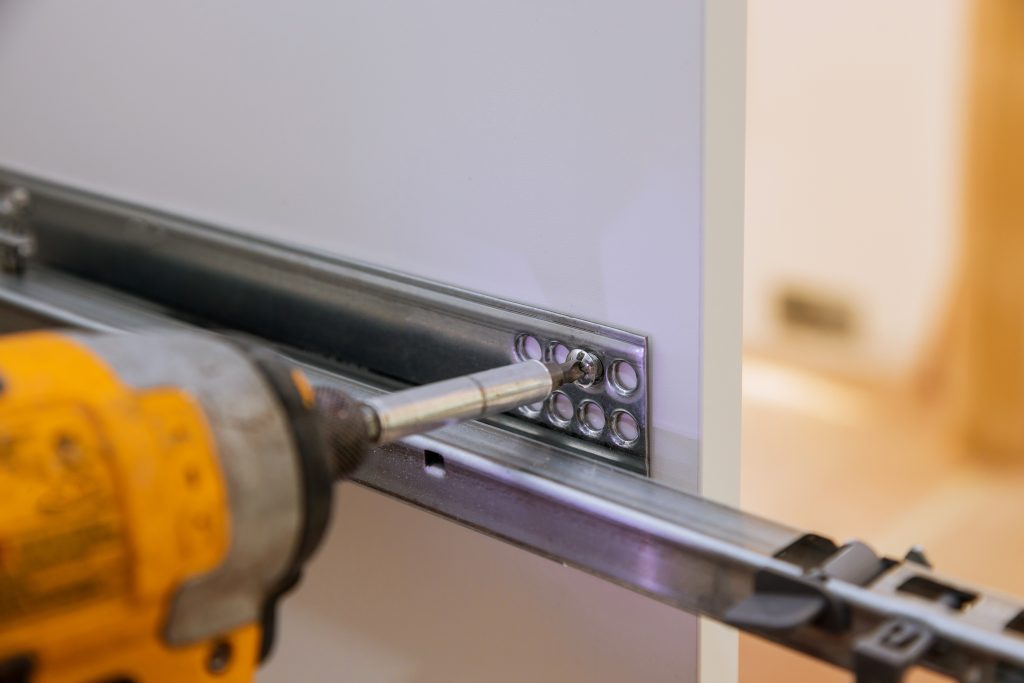
As outlined by Jenn over at Build-Basic.com, installing drawer slides should be a relatively painless project. There are several steps to follow and a few key measurements to take in order to get the job done. But the everyday homeowner should be able to rest easy knowing that this won’t be an all-day install.
First
Take a ruler or a straightedge and make note of where the drawer slide will be placed inside your piece of furniture. The exact measurements will vary depending on the types of drawer slides you’re dealing with, of course. But you will want to mark exactly where the slide will be as a precursor for your install.
Next
Move the slide into position according to the marks you just made. When you’re satisfied with the slide’s placement, use a drill to create pilot holes for screws to hold your slide in place. From there, it’s as easy as screwing in your slide with the provided screws, then repeating the process for the final slide in the pair.
Here’s where that straightedge will be helpful once more. In the same fashion that you mocked up the placement of your slide inside your furniture, it’s now time to sketch out where the slide extension will live on the drawer itself. When the proper measurements are in place, you can be free to position your slide extensions and attach them to the drawer.
Now for the satisfaction of bringing it all together. You should be able to hold the drawer level in front of the piece of furniture, line up the slide extensions with the slide tracks inside the piece, and slide the drawer into its designated spot. It can require a bit of a firm push at first, but as soon as the components are working in unison, you should be able to go from completely closed to having full extension drawer slides effortlessly.
How do you measure drawer slides?
If you’re in search of more guidance when it comes to the act of actually measuring drawer slides, we have you covered. The key revolves around measuring the space (box) that the drawer slides into, rather than the drawer itself. Starting at the back of the box, measure to the front and round the total down to the nearest inch. That will give you the length that you will need for your next set of slides.
From there, measure both the width of the drawer and the width of the opening of the cabinet. If these two measurements are within 1/8 inch of each other, you’re free to use full extension drawer slides. However, anything outside those parameters will most likely require bottom-mount slides or even some quick carpentry to ensure new slides will work with your drawer.
And, as a last resort, you can always bring your drawer with you to pick out new slides. It might be a little out of the ordinary, but it is a surefire way to guarantee that you’re purchasing drawer slides that will match your needs.
How do self closing drawer slides work?
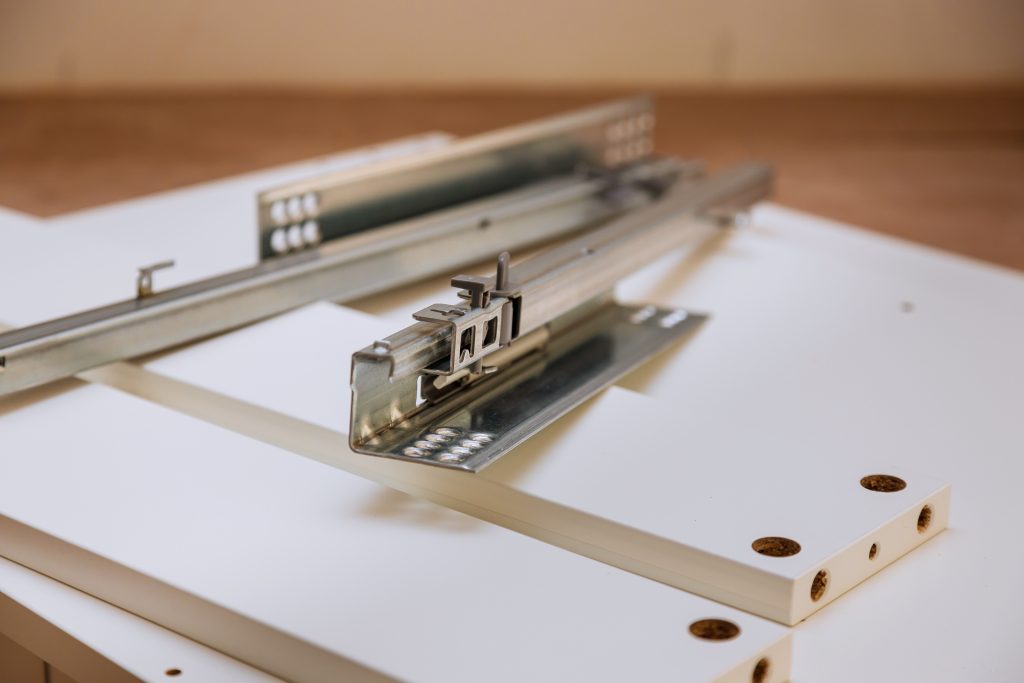
Like most of modern society, you probably cringe at the sound when a drawer gets slammed shut. It’s loud, it’s jarring, and it leaves you concerned about the structural integrity of said drawer.
Modern problems call for modern solutions, and that’s just what drawer slide manufacturers have come up with. Self-closing slides allow a person to gently press on the front of a drawer and let the slides do the rest of the work, gliding the drawer itself back into place. In other words, goodbye, explosive drawer slamming. Hello, smooth, automated closing.
Self-closing drawers, while among the most popular, aren’t the only kind of specialized drawer slides. Soft-close, for instance, is just a step below self-closing. It slows the drawer down as it closes to protect against a slam. On the opposite side of the spectrum, touch-release slides trigger drawers to pop open with a simple press.
Other options, like detent and locking slides, are made to stay in a defined position until they’re pushed. This stationary style of slide is essential for kitchen essentials like slide-out cutting boards.
How does one adjust soft closing cabinet drawers?
There are troubleshooting steps to move through if you find yourself needing to adjust self-closing cabinet slides. A quick correction can solve nagging issues like excessive slamming or poor fit back into the furniture.
Most soft-close drawers will have an adjustment knob in the corner of the drawer clip. Feel free to play with this knob in order to dial in what works best for your setup.
Remember, a properly-working soft-close drawer should be able to quietly close without a strong show of force on your part. The slide’s components should take things over when the drawer is about three quarters of the way closed. It will be guided it back the last 25 percent for a soft finish.
If you’re still running into issues after adjusting the drawer’s adjustment knob, there may be a problem with the slides themselves. Make sure they are both clear of any debris that may be prohibiting proper functionality. And, if these problems persist, you may have to consider replacing your drawer slides entirely.
Shop for slides with confidence
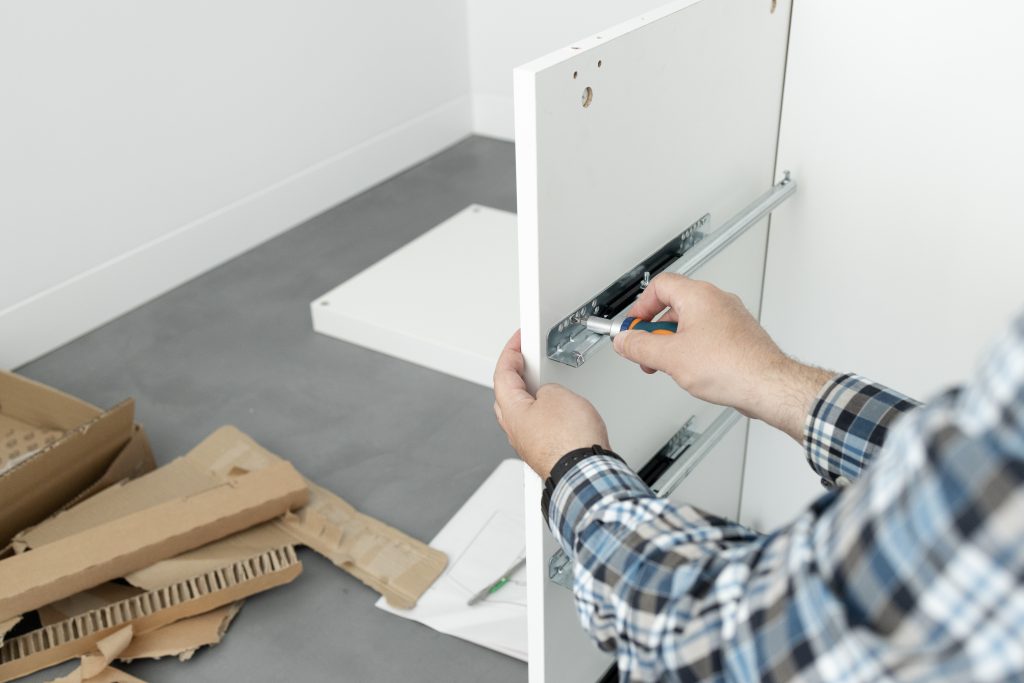
Now that you’ve been caught up to speed on all the advancements and perks of today’s modern drawer slides, there’s really only one thing left to do. It’s time to go shopping for the slides that will be right for you.
Fortunately, you don’t have to go far to find what you’re looking for. FastCabinetDoors has a wide selection of drawer slides that cater to every need or situation. From full extension drawer slides to soft-close slides and more standard options as well. With availability ranging from 18 to 27 inches, our selection of slides has plenty of options to make sure you find the right slides for your cabinet doors.



